[ESP/ENG] Los autos de la F1 al desnudo: el W13 de Mercedes con un diseño largo y delgado y pontones reducidos a su mínima expresión. / The naked F1 cars: Mercedes' W13 with a long, slim design and pontoons reduced to a minimum.

Ya he hablado en posts anteriores sobre los verdadros cambios en los monoplazas de Fórmula 1 para esta temporada, desde el aspecto revolucionario aerodinámico de la nueva Red Bull RB18 hasta el nuevo Ferrari F1-75 con su desafío aerodinámico inédito y la disposición de los frontones laterales (sidepods) opuestos a los de Red Bull.
Ambos equipos, no obstante haber cambiado mucho el aspecto estético de sus monoplazas de acuerdo a la nueva reglamentación de la FIA, no pudieron obtener el máximo de sus autos en las primeras sesiones de prueba no oficiales de Montmeló en Barcelona la semana pasada. Causa principal en haber bajado el nivel de las expectativas fue, sin lugar a dudas, el efecto negativo producido por el llamado "porpoising" del cuál les hablé en este otro post y que origina en la recta de aceleración y en la de desaceleración en proximidad de las curvas pequeños "saltitos" de los cuáles los pilotos fueron los primeros en darse cuenta -concretamente Sainz de Ferrari fue el primero de ellos).
Sin embargo este efecto parece haber efectado menos al equipo Mercedes del cuál me ocuparé hoy.
Luego de los dos dias iniciales probando distintos compuestos y ajustando otros elementos como los alerones anteriores y posteriores, Lewis Hamilton no tuvo problemas en obtener el mejor tiempo lejos del resto, incluso bastante lejos de Red Bull su principal en ambos campeonatos este año, al menos en la teoría.
Por si esto fuera poco para desanimar sus adversarios hace pocas horas el team alemán declaró que en realidad el monoplaza que iba a debutar en la Fórmula 1 no iba a ser realmente el mostrado en Montmeló sino otro técnicamente superior y aún mࡰs confiable.
En esta guerra de nervios y de marketing publicitario tendremos que esperar los test oficiales y las primera carrera para ver cuanto hay de cierto en las declaraciones de los equipos y pilotos y cuanto deberá corregir y ajustar para ser altamente competitivos.
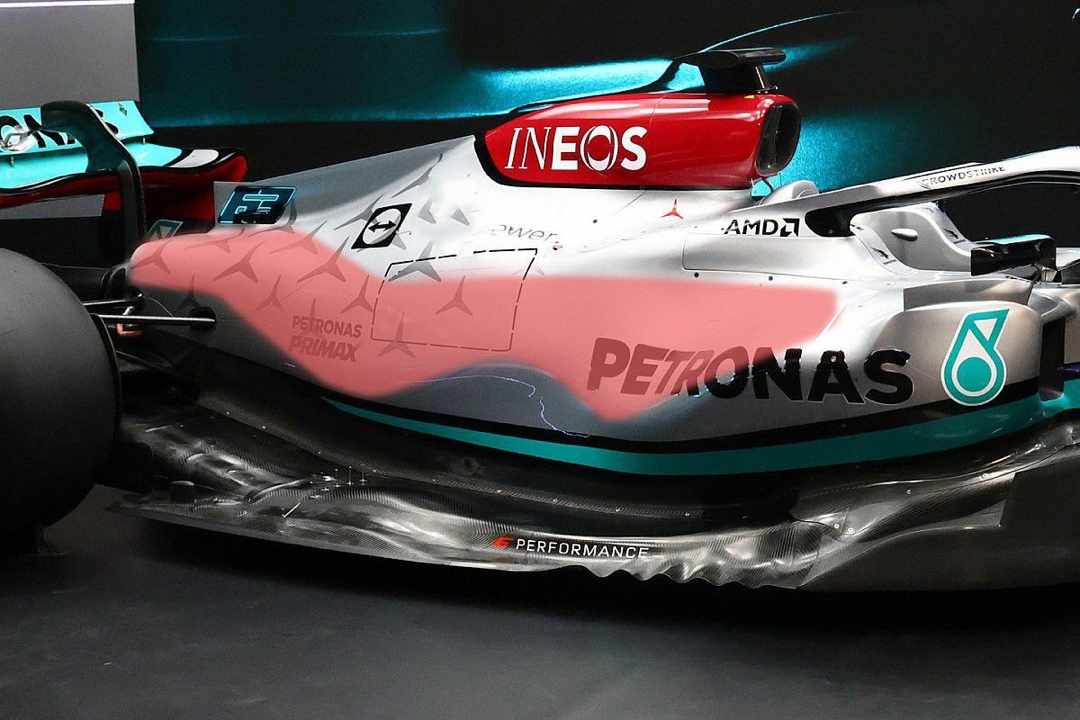
I've talked in previous posts about the real changes to the Formula 1 cars for this season, from the revolutionary aerodynamic look of the new Red Bull RB18 to the new Ferrari F1-75 with its never-before-seen aerodynamic challenge and the arrangement of the sidepods opposite to those of Red Bull.
Both teams, despite having changed a lot of the aesthetics of their cars in line with the new FIA regulations, were unable to get the most out of their cars in the first unofficial test sessions at Montmeló in Barcelona last week. The main reason for the lowering of expectations was, without a doubt, the negative effect produced by the so-called "porpoising" which I talked about in this post and which causes on the acceleration and deceleration straight near the corners small "jumps" which the drivers were the first to notice - Ferrari's Sainz was the first of them).
However, this effect seems to have been less of an issue for the Mercedes team, which I will focus on today.
After the initial two days of testing different compounds and adjusting other elements such as the front and rear wings, Lewis Hamilton had no problems to get the best time away from the rest, even quite far away from Red Bull, their leader in both championships this year, at least in theory.
As if this was not enough to discourage their opponents a few hours ago the German team declared that in reality the car that was going to debut in Formula 1 was not really going to be the one shown in Montmeló but another one technically superior and even more reliable.
In this war of nerves and advertising marketing we will have to wait for the official tests and the first race to see how much truth there is in the statements of the teams and drivers and how much will have to be corrected and adjusted to be highly competitive.
Frontones anchos con cubiertas estrechas, canales laterales muy amplios y caja de cambios corta./ Wide sideposts with narrow tyres, very wide side channels and short gearbox.
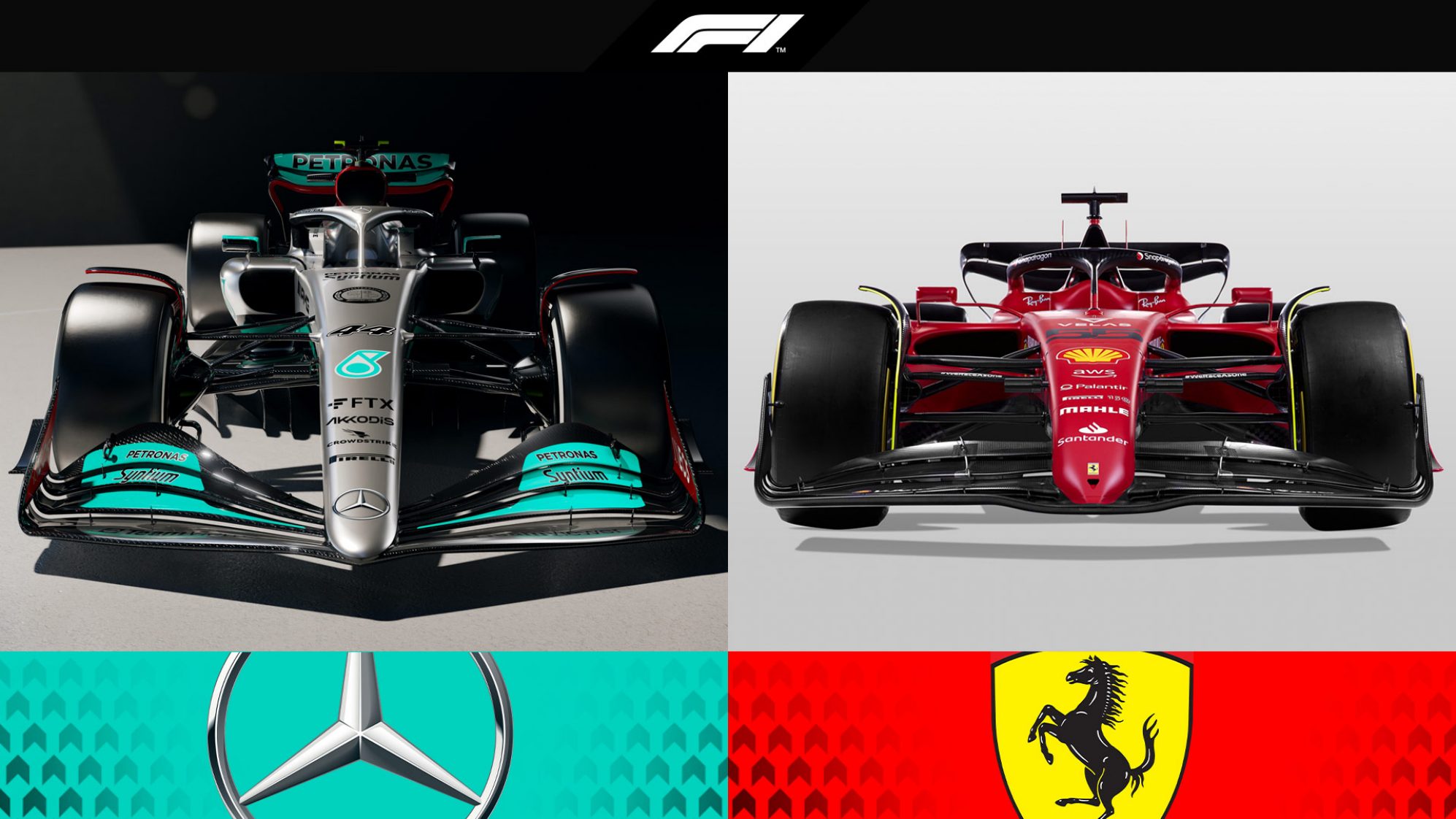
Los sideposts (es decir los frontones laterales) iban a ser el principal motivo de preocupación para los técnicos de cada equipo en el diseño de los monoplazas de este temporada.
Y hasta ahora, esos cambios tan promocionados le han dado la razón a aquellos que sostenían que el cambio en la Fórmula 1 solo dependía de la fantasía, de la creatividad y de la eficiencia de esta nueva terminología técnica que ha sido traducida al español como frontones laterales que deben actuar sobre los difusores y reciclar el aire con dos objetivos: uno es el de enfriar los pneumáticos y sabemos cuanto sean in fluyentes éstos desde hace muchos años en las carreras de Fórmula 1 y el segundo es generar un flujo de aire hacia abajo que mantenga el auto lo más "pegado" al suelo, en efecto se llama en términos aerodinámicos "efecto suelo".
Red Bull por ejemplo los ha presentado con un notable declive hacia abajo, mientras que Ferrari ha propiciado presentarlos luego de parte inicial plana con una inclinación hacia arriba.
Pero lo más destacado en el nuevo W13 son los canales laterales, los más anchos que se han presentado en todos los monoplazas de F1 hasta ahora y que permiten crear un volumen muy grande en el flujo de aire dirigido hacia el difusor.
Mercedes apunta a que esta innovación produzca una carga diferencial en la presión del aire -mayor que en los otros monoplazas- permietiendo una carga aerodinámica mayor.
Otro detalle tal vez -aparentemente- de menor importancia pero distintitivo en este nuevo "restyling" de la W13 para el 2022 es la colocación de la unidad de potencia, la caja de aire del motor y las tuberías asociadas que comienzan mucho más atrás del habitáculo del piloto y de otros monoplazas como por ejemplo Ferrari, permitiendo de esta manera una caja de cambios más corta.

Sidepods (i.e. sidepods) were to be the main concern for each team's technicians in the design of this season's cars.
And so far, these much-publicised changes have proved right those who argued that change in Formula 1 only depended on fantasy, creativity and the efficiency of this new technical terminology, which has been translated into English as sidepods that should act on the diffusers and recycle air for two purposes: one is to cool the tyres and we know how much these have been in-flowing for many years in Formula 1 racing and the second is to generate a downward airflow that keeps the car as "glued" to the ground as possible, in effect called in aerodynamic terms "ground effect".
Red Bull, for example, has presented them with a noticeable downward slope, while Ferrari has been keen to present them after a flat initial part with an upward slope.
But the highlight of the new W13 is the side channels, the widest on any F1 car to date, which create a very large volume of airflow towards the diffuser.
Mercedes aims for this innovation to produce a differential load in air pressure - greater than on the other cars - allowing for increased downforce.
Another perhaps - seemingly - minor but distinctive detail in this new restyling of the W13 for 2022 is the positioning of the power unit, engine airbox and associated pipes starting much further back from the driver's cockpit and other single-seaters such as Ferrari, thus allowing for a shorter gearbox.
Otros detalles aerodinámicos en el W13. / Other aerodynamic details on the W13.
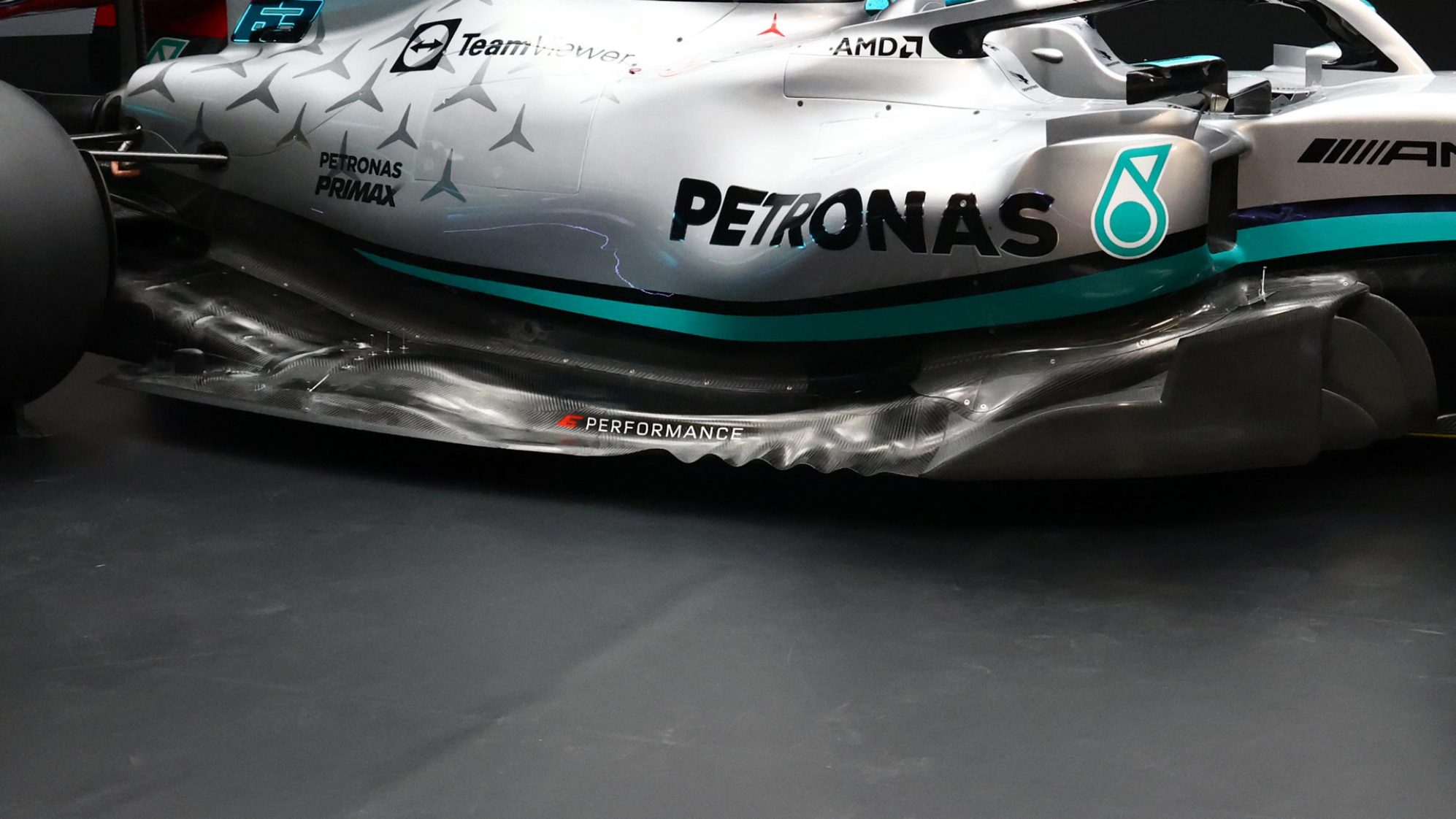
Una mayor presión en el flujo de aire que parece ser el aspecto principal en el que ha trabajado Mercedes se ve en la entrada de estos túneles que parece ser muy pequeña pero a la vez es mycho más alta que en el resto de los monoplazas.
Según los técnicos de Mercedes esta variante podría influir aumentando la presión del flujo de aire alrededor de la entrada dirigiéndolo hacia los costados o hacia afuera, según lo impongan las circunstancias.
En realidad existe entre todos los equipos una idea bastante uniforme respecto a los flujos de aire, y es que cuanto más rápido se pueda hacer circular el aire en la parte delantera del auto, más energía o presión estará disponible para alimentar el flujo hacia los túneles, los canales laterales y exteriroes.
Otro elemento diferencial en el nuevo Mercedes es la pequeña "aleta de tiburón" colocada en la parte trasera para ayudar a la estabilidad del monoplaza en la primera parte de la curva y a la entrada de aire que se produce en ese momento de la desaceleración haciendo que la introducción de esa masa de aire sea más suave y progresiva.

A higher airflow pressure which seems to be the main aspect Mercedes has been working on can be seen in the inlet of these tunnels which seems to be very small but at the same time is much higher than on the other cars.
According to Mercedes technicians, this variant could be influenced by increasing the airflow pressure around the inlet by directing it to the sides or outwards, as circumstances dictate.
There is actually a fairly uniform idea among all the teams regarding air flows, which is that the faster the air can be circulated at the front of the car, the more energy or pressure will be available to feed the flow to the tunnels, side and outside channels.
Another differentiating element on the new Mercedes is the small "shark fin" positioned at the rear to help the car's stability in the first part of the corner and the air intake at that moment of deceleration by making the introduction of the air mass smoother and more progressive.
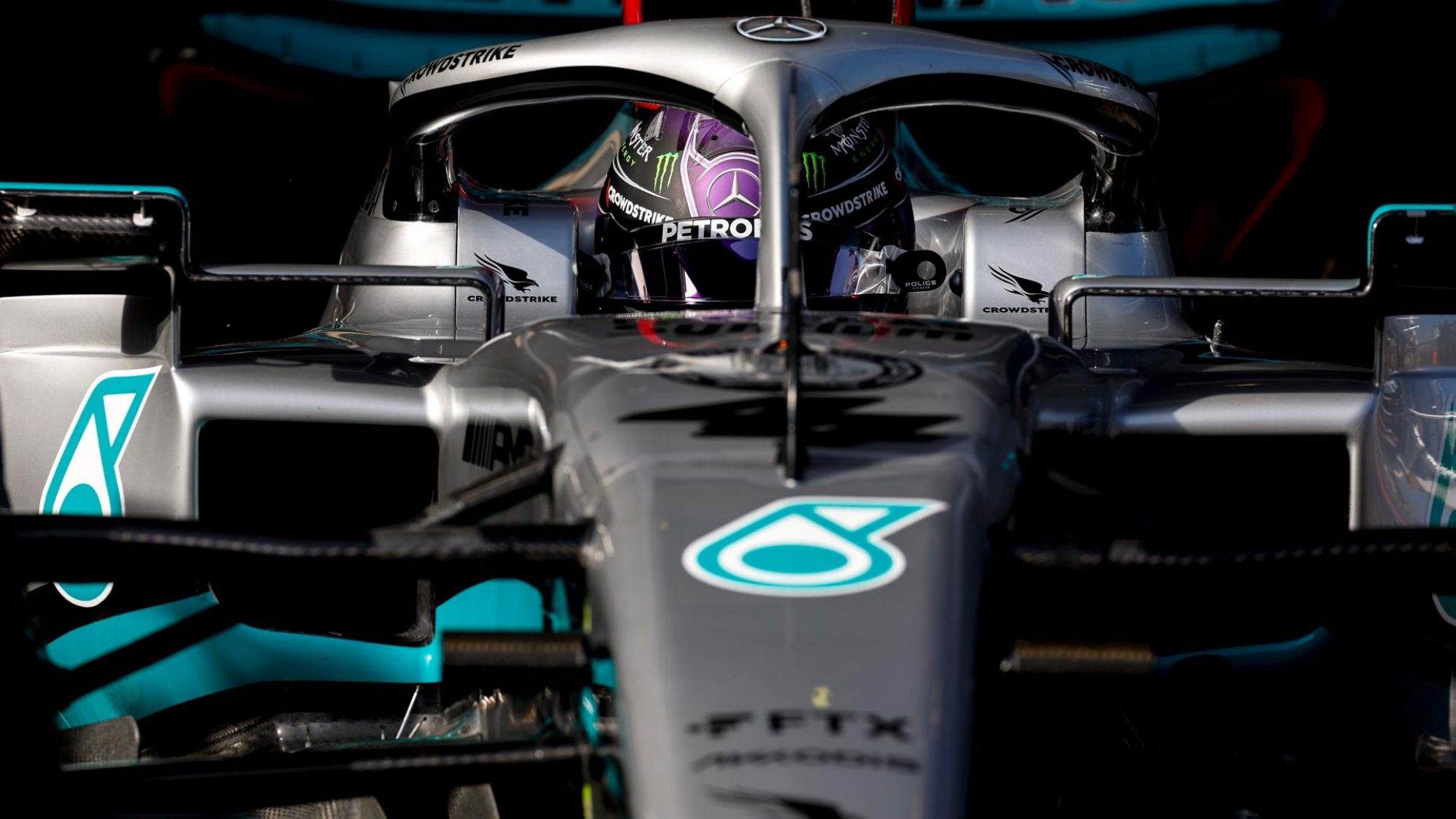
 | 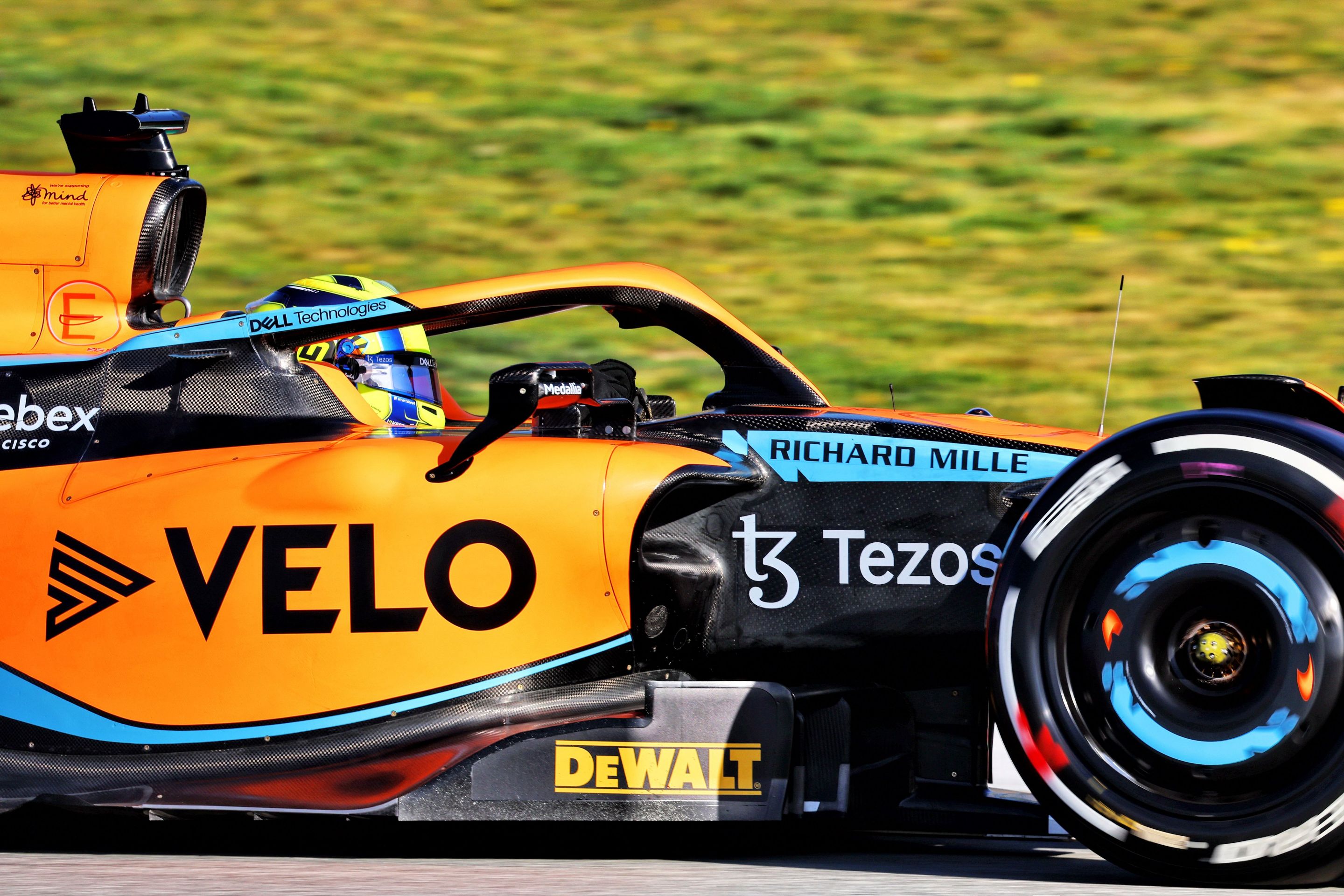 | 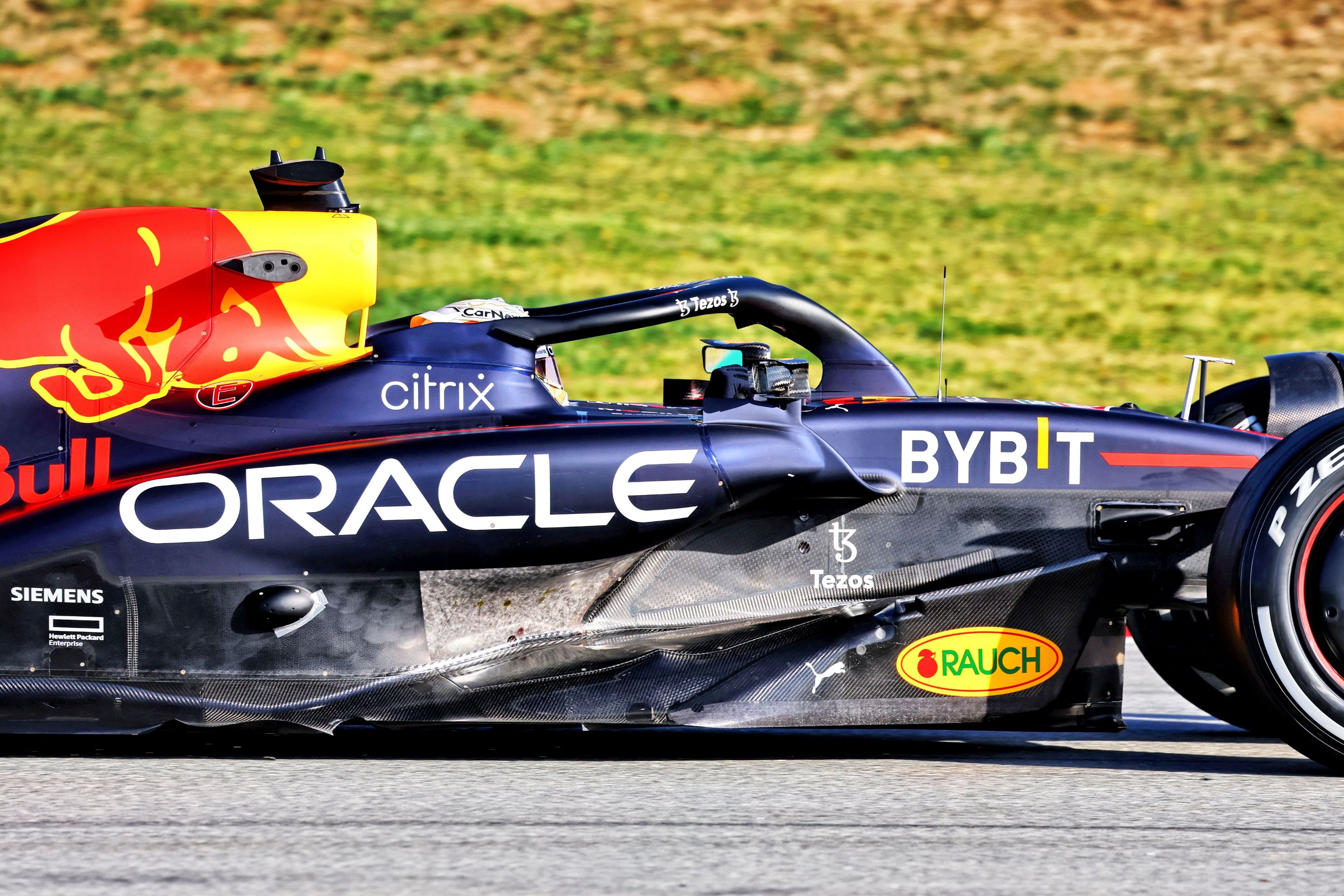 |
|---|


La parte inferior del banner de la firma corresponde al badget elaborado por el equipo de @hivebuzz. Mi agradecimiento a ellos y en particular a @arcange.
The lower part of the signature banner corresponds to the badget made by the @hivebuzz team. My thanks to them and in particular to @arcange.










Comments